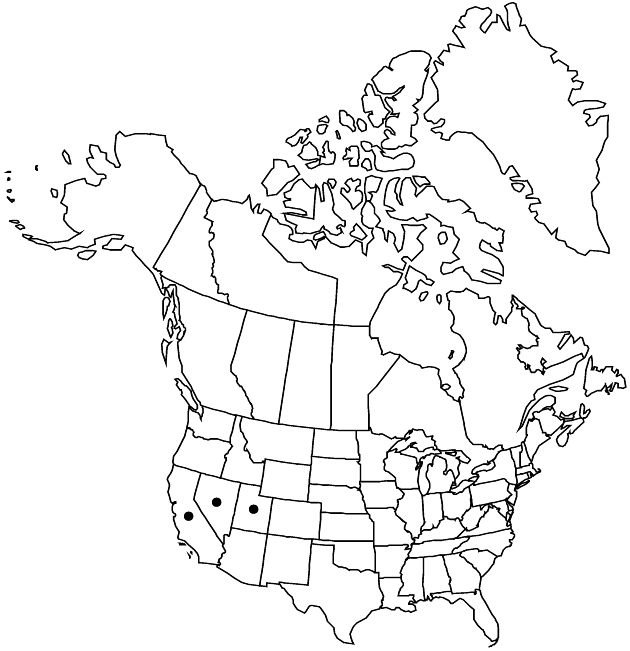Show Lower Taxa
Difference between revisions of "Tetradymia axillaris"
Bot. Gaz. 37: 277. 1904.
FNA>Volume Importer |
FNA>Volume Importer |
||
| Line 56: | Line 56: | ||
|publication year=1904 | |publication year=1904 | ||
|special status= | |special status= | ||
| − | |source xml=https://jpend@bitbucket.org/aafc-mbb/fna-data-curation.git/src/ | + | |source xml=https://jpend@bitbucket.org/aafc-mbb/fna-data-curation.git/src/f6b125a955440c0872999024f038d74684f65921/coarse_grained_fna_xml/V19-20-21/V20_1423.xml |
|tribe=Asteraceae tribe Senecioneae | |tribe=Asteraceae tribe Senecioneae | ||
|genus=Tetradymia | |genus=Tetradymia | ||
Revision as of 19:41, 24 September 2019
Shrubs, 50–150 cm. Stems 1–5+, erect or spreading, spiny, evenly pannose. Leaves: primaries forming straight, ± squarrose spines, 10–50 mm; secondaries filiform to clavate, 2–12(–20) mm, sparsely arachnose or glabrous. Heads 1–3 (in axils of spines). Peduncles 4–15 mm. Involucres turbinate to campanulate, 7–9 mm. Phyllaries 5, ovate. Florets 5–7; corollas pale yellow, 7.5–9 mm. Cypselae 4.5–5.5 mm, densely pilose (hairs 6–14 mm); pappi of ca. 25, subulate to setiform scales 6–7.5 mm.
Distribution

w United States.
Discussion
Varieties 2 (2 in the flora).
The two varieties of Tetradymia axillaris are partially sympatric and intergrade in areas of overlap.
Selected References
None.
Key
| 1 | Peduncles and phyllaries pannose to tomentose; hairs of cypselae 9–14 mm | Tetradymia axillaris var. longispina |
| 1 | Peduncles and phyllaries glabrous; hairs of cypselae 6–8(–10) mm | Tetradymia axillaris var. axillaris |